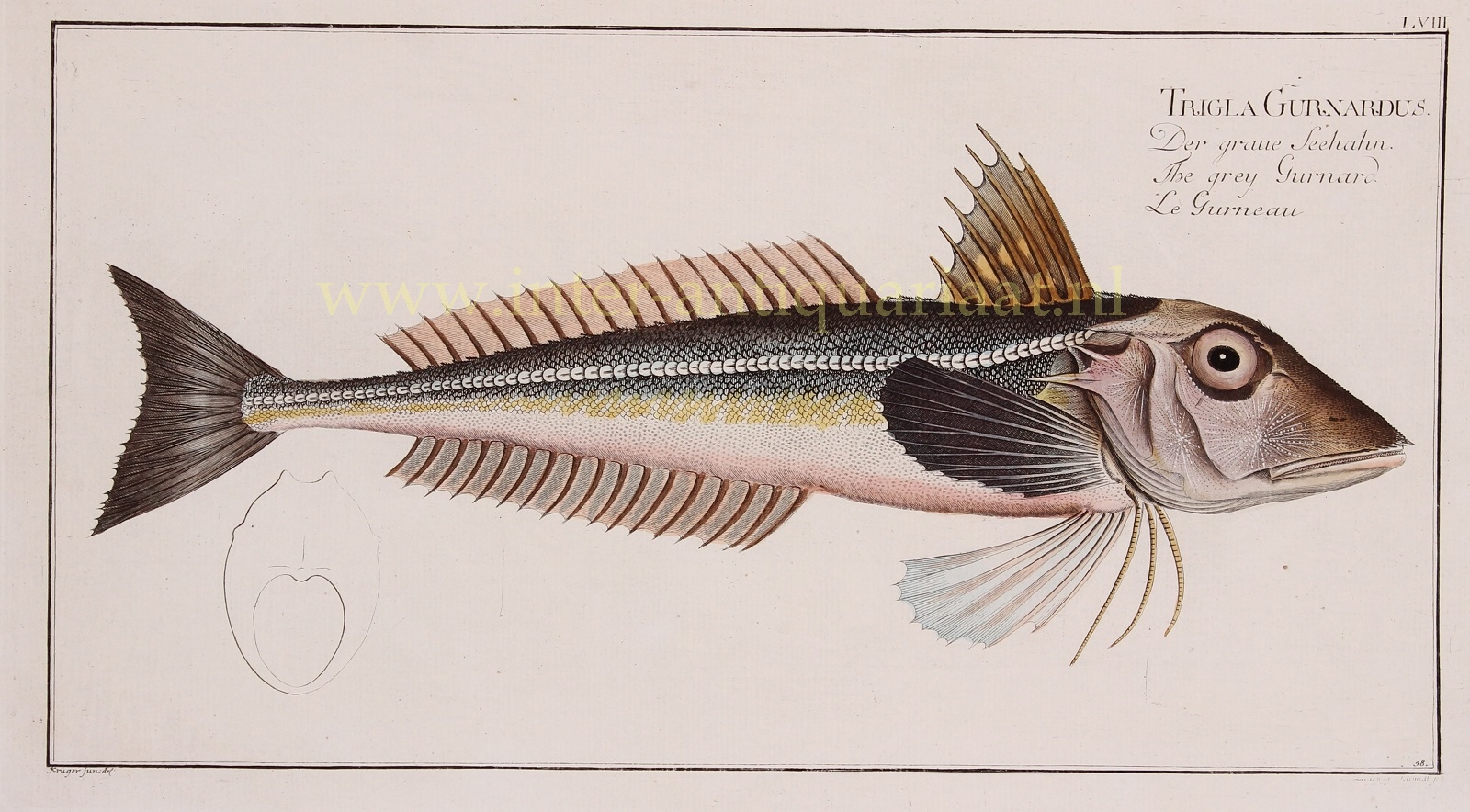Grauwe poon – Markus Elieser Bloch, 1782-1795
€350
THE GREY GURNARD
“Trigla Gurnardus/Der Graue seehahn/The grey Gurnard/Le Gurneau” (plate 24), copper engraving made by Ludwig Schmidt after the drawing of Krüger jr, for Markus Elieser Bloch’s “Allgemeine Naturgeschichte der Fische” published in Berlin between 1782 and 1795. With original hand colouring. Size: 19 x 38 cm.
Bloch’s work on the “Allgemeine Naturgeschichte der Fische” occupied a considerable portion of his life, and is considered to have laid the foundations of the science of ichthyology. The publication was encouraged by a large subscription, and it passed rapidly through five editions in German and in French. Bloch made little or no alteration in the systematic arrangement of Peter Artedi and Carl Linnaeus, although he was disposed to introduce into the classification some modifications depending on the structure of the gills. To the number of genera before established, he found it necessary to add nineteen new ones, and he described 276 species new to science, many of them inhabitants of the remotest parts of the ocean, and by the brilliancy of their colours, or the singularity of their forms, as much objects of popular admiration as of scientific curiosity.
Bloch is considered the most important ichthyologist of the 18th century.
The grey gurnard is a species of fish that belongs to the family Triglidae. It is a bottom-dwelling species that is commonly found in the temperate waters of the Atlantic and Mediterranean Sea. The grey gurnard has a distinctive, triangular shaped head, with large eyes and bony plates on its body that help to protect it from predators. It feeds on small crustaceans and mollusks that it detects using its sensory barbels. The grey gurnard is not commonly consumed as a food fish, as it has a tough and bony structure, but it is sometimes used for its liver, which is considered a delicacy in some cultures.
Price: Euro 350,-


